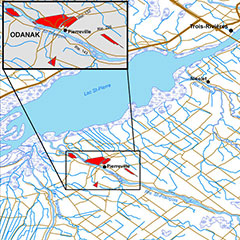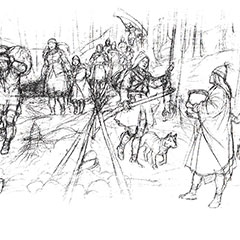The Abenaki of Québec
The Abenaki are one of Québec’s 11 First Nations. Like the Algonquins, Atikamekw, Crees, Innus, Malecites, Micmacs and Naskapis, they belong to the large Algonquian linguistic family. Traditionally, the Abenaki were semi-nomadic. They based their subsistence activities primarily on fishing, hunting and gathering, although they grew corn, beans, squash and tobacco during the summer. They lived in small, scattered communities for the better part of the year, but came together in large groups in the spring and summer to raise crops. The Abenaki made woven baskets from ash and sweet grass. In fact, basketry is still one of the traditional activities engaged in by members of the Abenaki First Nation.
Today, most Abenaki are grouped in two separate communities: Odanak and Wôlinak, both of which are located on the south shore of the St. Lawrence River, between Sorel and Trois-Rivières. These two villages — sometimes called reserves — have access to services offered by their respective band councils, as well as by the Grand Council of the Waban-Aki Nation in Wôlinak. The Grand Council provides technical services (architecture, building mechanics), consulting services (financial management, band administration), social services (child and family services) and home support (help with daily activities, in-home respite). It also provides communication tools (community newspapers, press relations), as well as services in translation, land claims and consultations, hunting, fishing, computing and geomatics (map-making). Members of the Abenaki First Nation living outside Odanak and Wôlinak can also benefit from these advantages and services as long as they are connected to one of the two villages.










